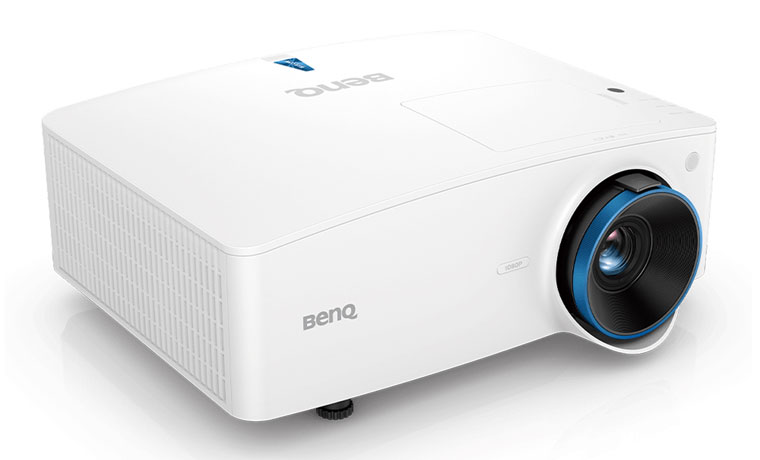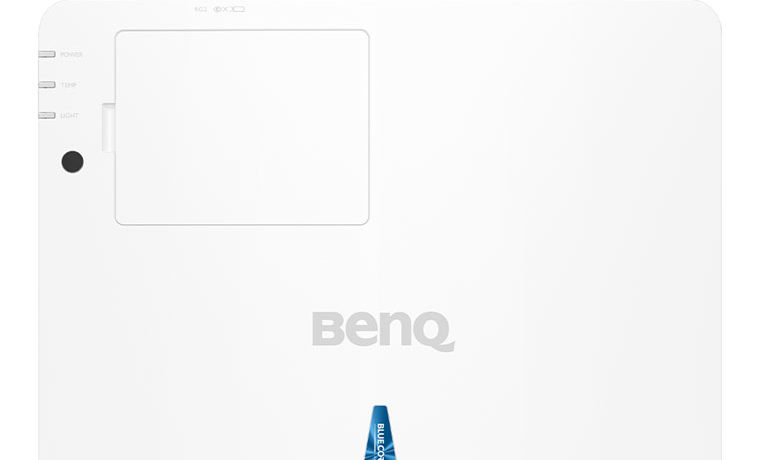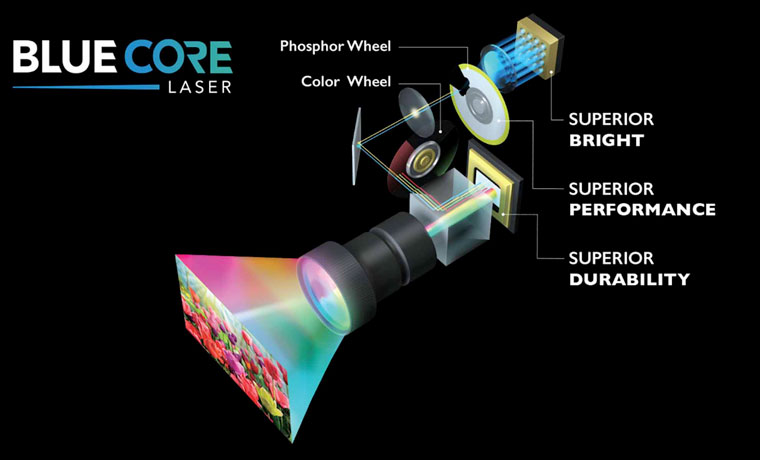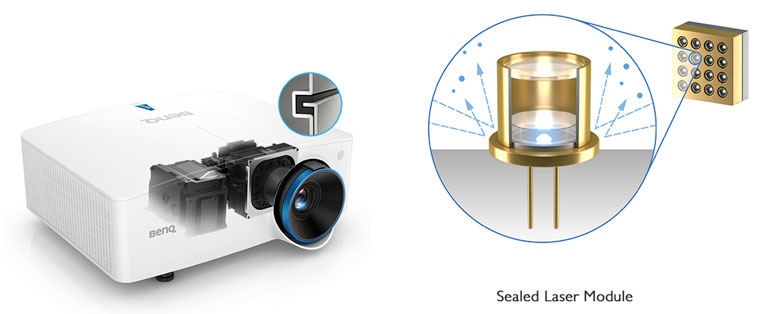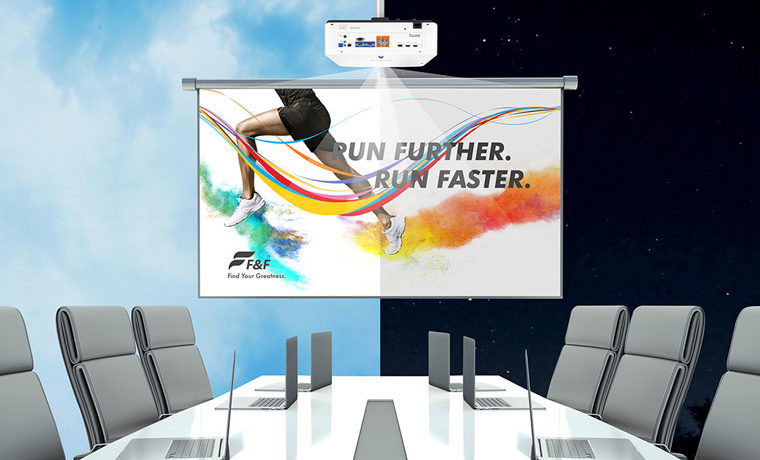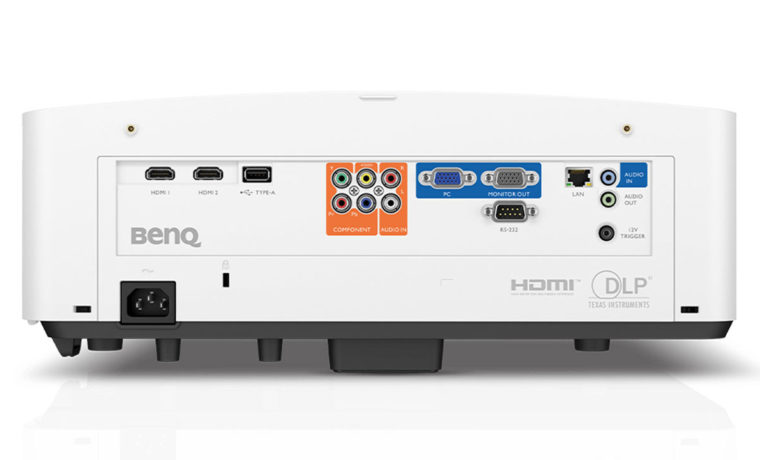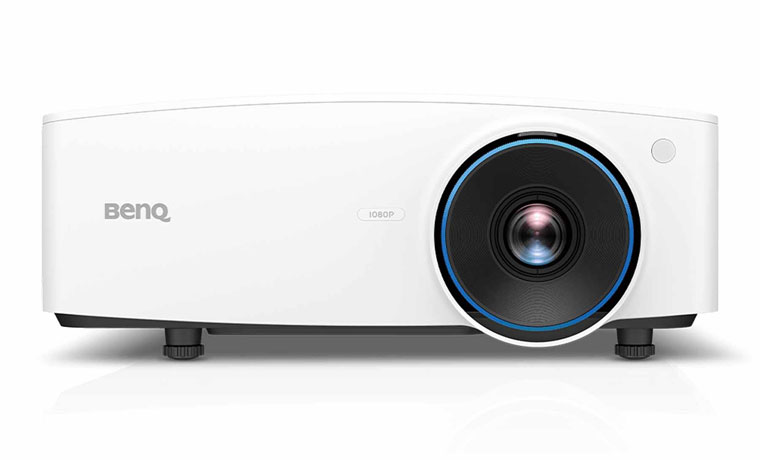The LH930 is based on DLP (Digital Light Processing) imaging technology with laser/phosphor illumination. In this type of system, which BenQ calls BlueCore, some of the light from an array of blue lasers excites a yellow phosphor wheel, whose yellow light combines with the rest of the blue lasers' light to produce white light.
The white light then passes through a color-filter wheel with segments of different colors. This is the same mechanism as lamp-based, single-chip DLP projectors. Each color is directed to the DLP imaging chip in turn, which forms the image for that color and reflects it through the main lens and onto the screen. The images for each color alternate so quickly that the human eye blends them into a full-color image. BenQ claims it covers over 90% of the BT.709 color gamut, the standard for HD video.
Thanks to its laser/phosphor light engine, the LH930 achieves a peak brightness of 5000 lumens, which is plenty bright enough to stand up to boardroom and classroom lights. If the room has less ambient light, the LH930 can automatically reduce its light output thanks to its built-in light sensor.
BenQ claims a staggering dynamic contrast ratio of 3,000,000:1, which is achieved by dynamically modulating the laser power. I strongly suspect that the actual measured contrast ratio is far less than 3,000,000:1, but dynamically modulating the laser—which creates a very high contrast-ratio spec—should exhibit good black-level performance for a business projector. Still, it probably can't match a good home-theater projector designed to work in the dark.
The laser/phosphor light engine is sealed to prevent dust and moisture from interfering with the lesson; in fact, it achieves a dust-resistant rating of IP5X. Also, it's rated to last up to 20,000 hours, so there's no need to change lamps every year or so. All in all, the LH930 is virtually maintenance-free.
I'm happy to report that the LH930 offers both horizontal and vertical lens shift, which makes placement much more flexible than many other DLP competitors. It also provides horizontal and vertical keystone correction to square up the image on the screen if the projector can't be placed where lens shift can do the job. This is handy if needed, but engaging keystone correction also degrades the detail in the image, so I don't recommend using it unless absolutely necessary.
BenQ offers several wireless-presentation options to help presenters make their points without hassle. You can plug the Qcast Mirror Wi-Fi dongle ($59, a bargain for Wi-Fi) into one of the projector's HDMI inputs (with a separate connection to the USB port for power) and wirelessly cast the screen of almost any device to display from the projector without requiring any special apps or drivers. It supports resolutions up to 1920x1080 at 24 or 30 fps and 1280x720 at 60 fps.
Another option is BenQ's InstaShow system, which lets up to 32 presenters take turns. You simply plug a small, one-button device into the HDMI output of a laptop (with a separate connection to USB for power) or install the InstaShow app on a smartphone or tablet, and switching between devices is completely seamless. You can even split the screen between two devices. This is a powerful feature that's especially useful in the classroom as well as for corporate training sessions.
For classrooms without a separate sound system, the LH930 includes two built-in speakers, each powered by a 10W amp. That's pretty hefty for onboard speakers, which should be plenty audible to all the students in a typical primary or secondary classroom, but it's likely not enough to fill a university lecture hall without help. Larger lecture halls typically have their own sound-reinforcement systems to amplify the audio throughout the room.
If the projector is mounted on the ceiling, it's probably not easy to reach. Fortunately, the LH930 is compatible with AMX, Crestron, Extron, and PJ Link control systems, making it easy to control remotely over your local network. Even better, you can manage an entire fleet of networked projectors from a single location. That includes maintenance alerts if any problems crop up.

